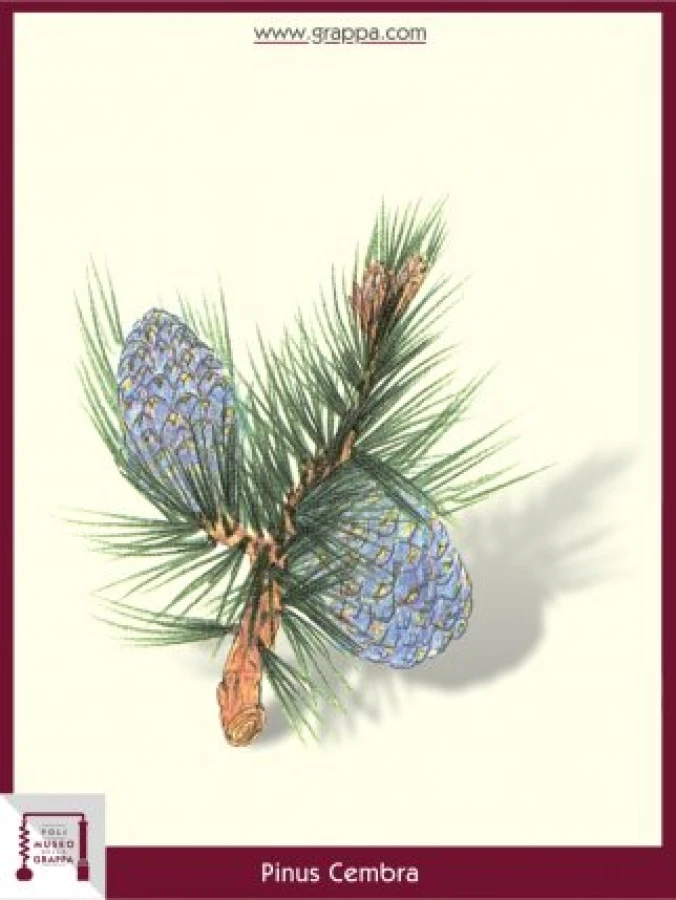Mountain flavour
Swiss pine, Arolla pine
Mountain flavour
Plant:
Swiss pine, Arolla pine
Plant Part:
pine cone
Plant Properties:
antiseptic, balsamic, strengthener
Description:
Everyone knows the Pine as the preferred wood for the popular carving figures in the Alps and its use for roofs, rustic furniture or for cladding the walls. This not only for its wide applicability and the elegant wood grain, but also for its characteristic and aromatic fragrant wood.
It is a plant species that grows mainly in higher locations, reaches a remarkable size and an unimaginable age. After fifty years, it develops pine trees, which are very much appreciated by wild animals such as squirrels and deer.
The Swiss Stone Pine cones, as well as essential for wildlife, are much suitable for flavoring liquors.
But its not easy to find them: first for the rarity of the plant, now available in a few areas of the Alps, and then because they grow only on adult plants and therefore very high.
A Grappa of Swiss Stone Pine will be therefore extremely rare and valuable.
Ingredients:
- 3 stone pine cones cut into segments
- 1 liter of Grappa
- some juniper berries
- 5 tablespoons brown sugar
Preparation:
Prepare the Grappa with three Pine cones cut into segments by placing them with some juniper berries and five tablespoons of brown sugar in one liter of Grappa.
Then leave the Grappa for two months in the sun and shake it frequently until the liquid has assumed a slightly pink color.
After filtration, the Grappa has to be aged for two other months.
The very pleasant taste reminiscent of the Swiss Stone Pine, but with a more delicate and softer aroma.


